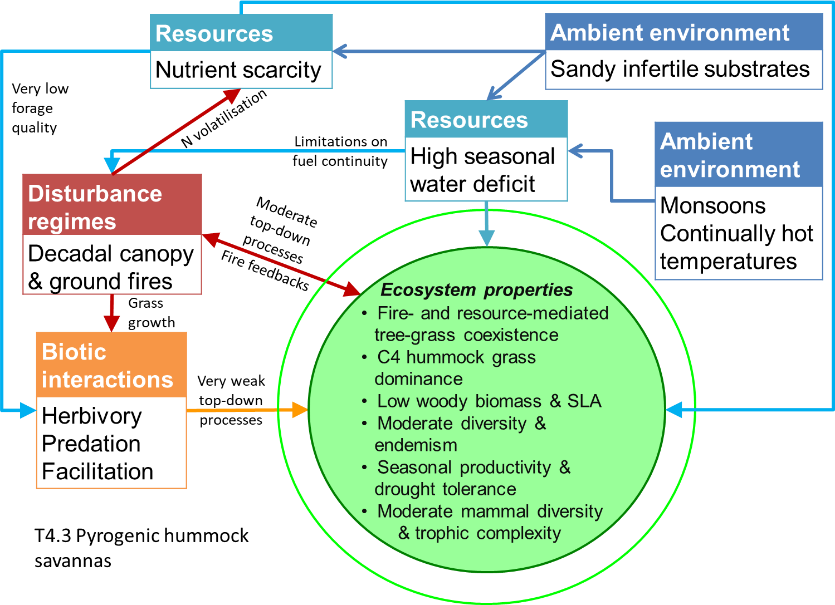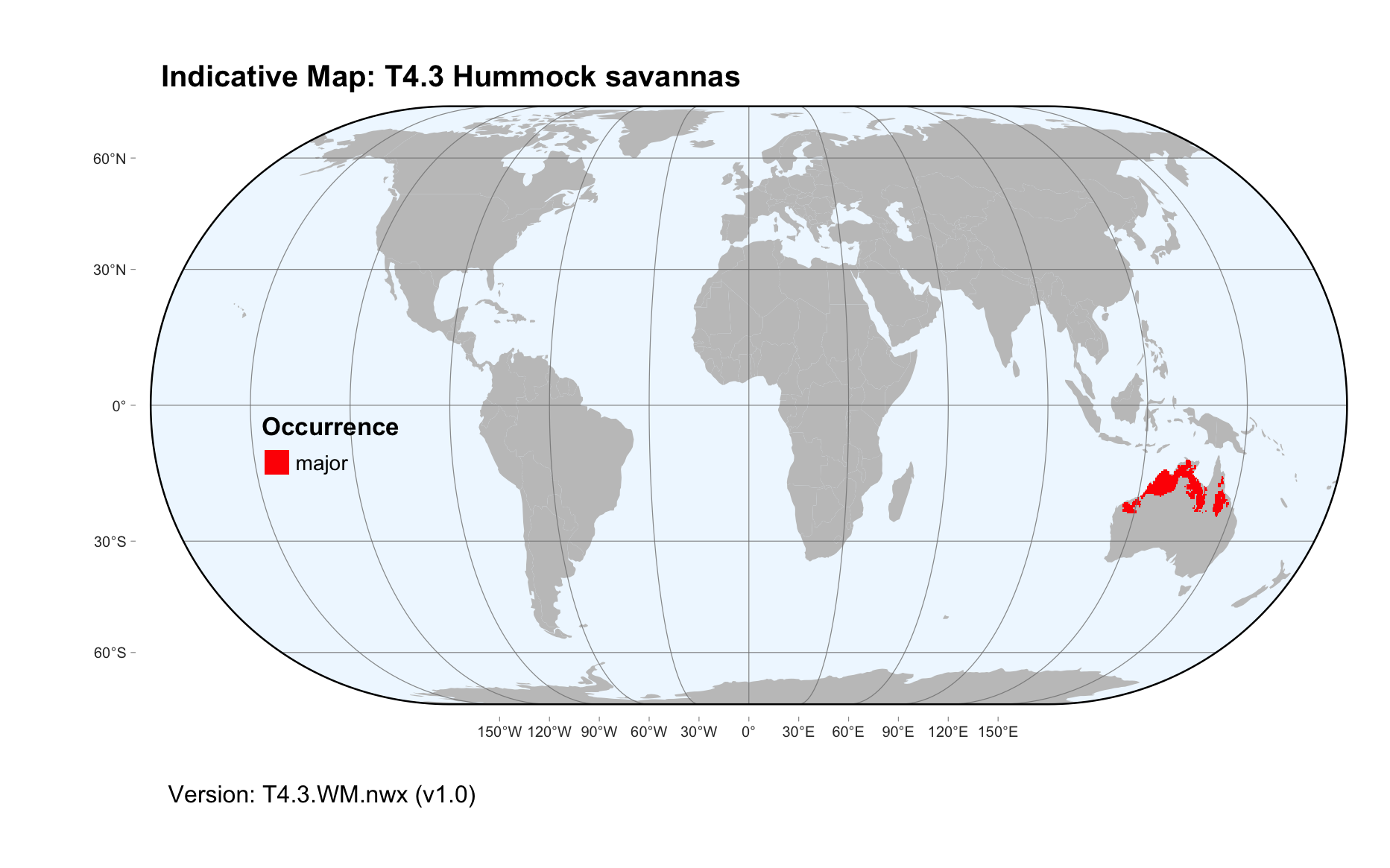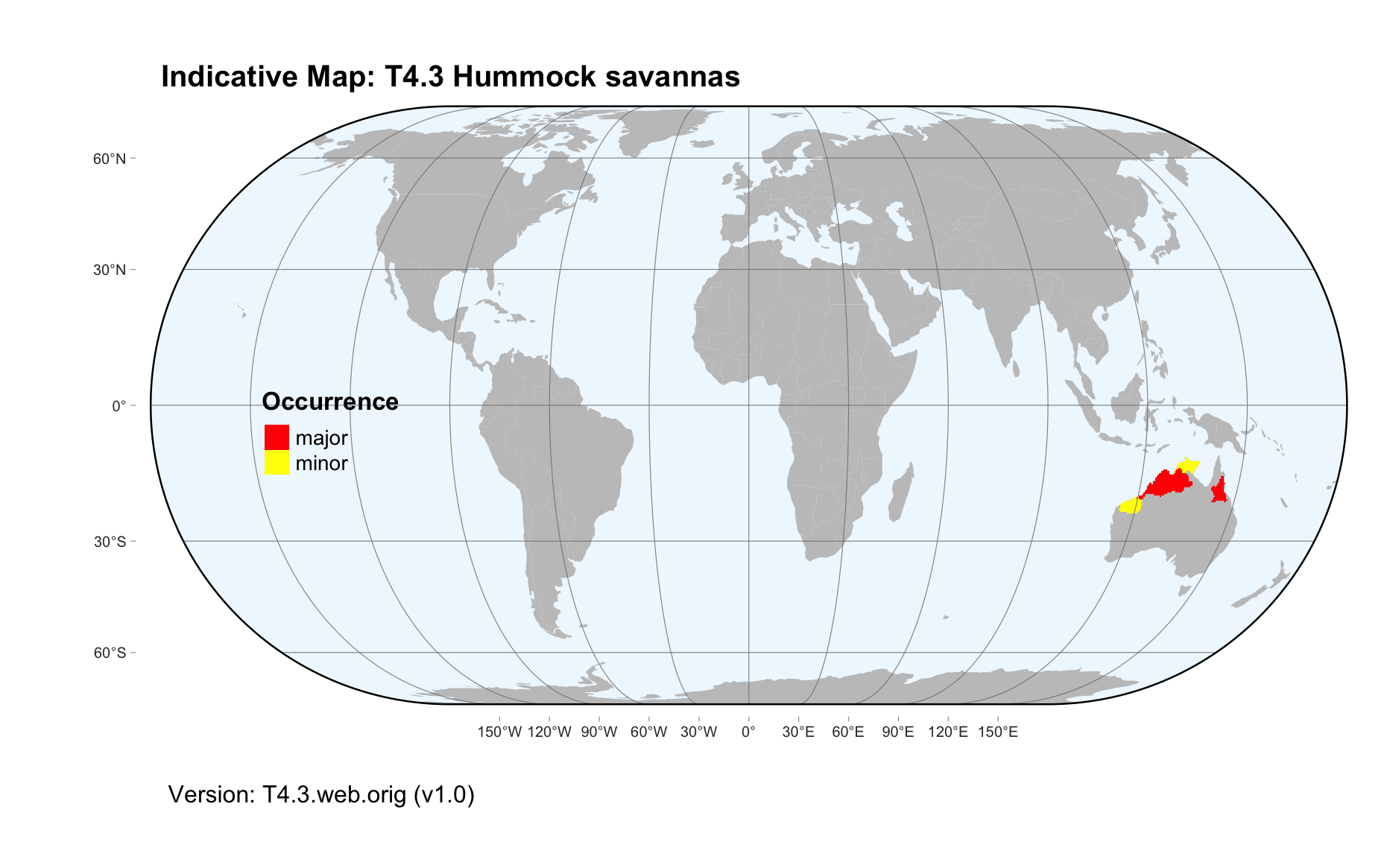Global ecosystem typology
Alternative site for the Global ecosystem typology with additional information for ecosystem profiles and indicative maps.
This site is maintained by jrfep
T4.3 Hummock savannas
Biome: T4. Savannas and grasslands biome
Contributors:
(texts)
Found only in northern Australia, hummock savannas are distinguished by a ground layer of slow-growing, domed hummock grasses interspersed with bare ground and some trees and shrubs. These habitats are less strongly seasonal than other savannas, but still with winter droughts and summer rains, and many plant adaptations to seasonal drought. Recurring fires are an important factor promoting patchiness of vegetation, but post-fire recovery is slower than other savanna ecosystems. Rocky coarse-textured substrates are low in nutrients. Foodwebs are correspondingly simple, with large numbers of invertebrates and low numbers of mammalian herbivores and vertebrate predators.
Key Features
Sparse to open low-productivity woodlands in nutrient poor often rocky landscapes with C4 hummock grasses, rich reptile fauna, abundant termites, moderate herbivore densities and irregular fires..
Overview of distribution
Restricted to northern Australia in the wet-dry and semi-arid tropics..
Profile versions
- v1.0 (2020-01-20): DA Keith
- v2.0 (2020-06-15): DA Keith; RJ Williams
- v2.01 ():
- v2.1 (2022-04-06): DA Keith; RJ Williams Full profile available at official site
Main references
Selected references for this functional group:
Lehmann CER, Anderson TM, Sankaran M, Higgins SI, Archibald S, Hoffmann WA, et al. (2014). Savanna vegetation-fire-climate relationships differ among continents. Science 343, 548-552.
Williams RJ, Cook GD, Liedloff AC, Bond WJ (2017) Australia’s tropical savannas: vast ancient and rich landscapes Australian vegetation (Ed. DA Keith), pp 368-388. Cambridge University Press, Cambridge. ISBN 978-1-107-11843-0
Diagrammatic assembly model

Maps
Maps are indicative of global distribution patterns are not intended to represent fine-scale patterns. The maps show areas of the world containing major (coloured red) or minor occurrences (coloured yellow) of each ecosystem functional group. See general notes on maps.
There are 2 alternative versions of the indicative map for this functional group, please compare description and sources below.
T4.3.WM.nwx_v1.0

Datasets
- GIRT
Map references
Keith, D. A. & Tozer, M. G. (2017) Girt: a continental synthesis of Australian vegetation Australian vegetation. D. A. Keith. Editor, pp3-39. Cambridge University Press, Cambridge
T4.3.web.orig_v1.0

Datasets
- Resolve-Ecoregions-2017
Map references
Dinerstein E, Olson D, Joshi A, Vynne C, Burgess ND, Wikramanayake E, Hahn N, Palminteri S, Hedao P, Noss R, Hansen M, Locke H, Ellis EE, Jones B, Barber CV, Hayes R, Kormos C, Martin V, Crist E, Sechrest W, Price L, Baillie JEM, Weeden D, Suckling K, Davis C, Sizer N, Moore R, Thau D, Birch T, Potapov P, Turubanova S, Tyukavina A, de Souza N, Pintea L, Brito JC, Llewellyn Barnekow Lillesø JP, van Breugel P, Graudal L, Voge M, Al-Shammari KF, Saleem M (2017) An Ecoregion-Based Approach to Protecting Half the Terrestrial Realm, BioScience 67: 534–545. DOI:10.1093/biosci/bix014. Data-set available on-line
Check: the Glossary / Profile structure / the public document